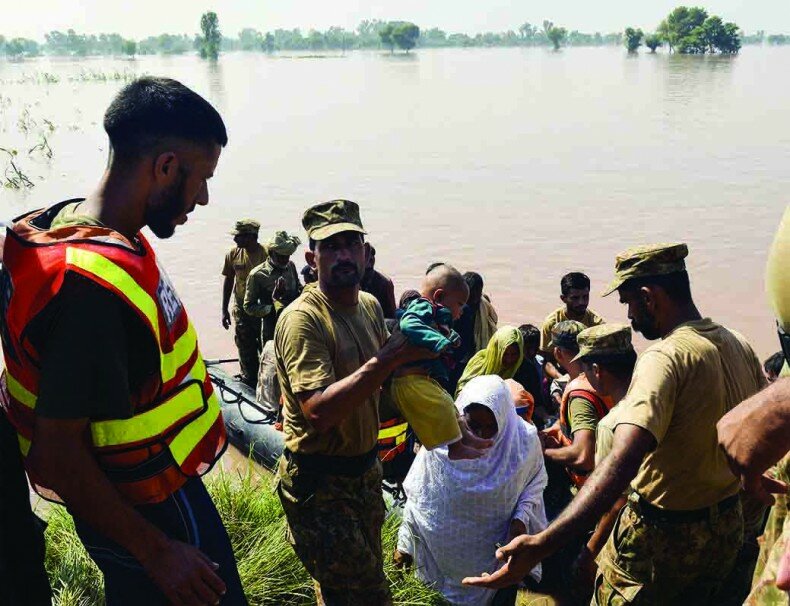Heavy monsoon rainfall in the country has brought catastrophe in Kashmir and most parts of the Punjab as flash floods have displaced thousands of people from their homes, further inflicting huge financial losses to an ailing economy.
Severe damage was caused by spillage from the Jhelum and Chenab Rivers, which swelled after heavy monsoon rainfall in August, flooding hundreds of adjoining villages. Many have died and entire villages have been displaced, most of the affected people are currently sheltered in tents waiting for medical supplies and food.
As usual, thanks to the incapability of civilian authorities and district administrations, the Pakistan Army is overseeing relief efforts. Ahmed Kamal, a spokesman for the National Disaster Management Authority (NDMA), said that more than 190 people have been killed — more than 60 in the Pakistani-administered part of Kashmir and about 130 in the Punjab province.
The army announced that it rescued thousands of people from flood hit areas in Jalalpur Bhattian, Pindi Bhattian, Hafizabad, Wazirabad, Jhang, Vanike Tarar, Rasoolnagar, Chiniot, Kot Momin, Gujrat, Gujranwala and Mandi Bahauddin. It also dropped food packs for the people still stranded.
Northern Punjab hasn’t seen flooding this bad in almost two decades, when the last major spillage occurred from Jhelum and Chenab. The ceaseless rains have also drowned urban centers like Lahore, where drainage mechanisms have once again proved inadequate in the face of heavy rains, which continued unabated for three of four days.
Federal cabinet members claim that they did not expect this kind of flood but the meteorological department rebuts their claims saying that the department had timely predicted heavy monsoon rain and consequent floods.
Indian Prime Minister Narendra Modi wrote to Nawaz Sharif on Sunday. “I offer any assistance that you may need in the relief efforts that will be undertaken by the government of Pakistan,” he said. “Our resources are at your disposal wherever you need them.” Sharif declined Mr. Modi’s offer.
Some Pakistanis have blamed India for suddenly releasing river waters into Pakistan, violating the agreement of giving due warning before opening dams. Others have started blaming politicians for breaking specific dams to save their lands and industrial units, diverting the water towards rural settlements.
Both these complaints are the usual reaction to floods in Pakistan, and have little basis in fact. What has always been more to the point is the fact that no long term water diversion mechanisms are put in place once the immediate relief and rehabilitation work after floods is completed. Pakistan simply needs to build a lot more water storage, more dams.
Compounding the problem of infrequent seasonal flooding is the tendency of poor rural residents to populate dried up riverbeds, which are fertile and cheaper to acquire, but also at greater risk in the event of the river filling up again. That is why the loss of life, residency and livestock is often so high.































































































